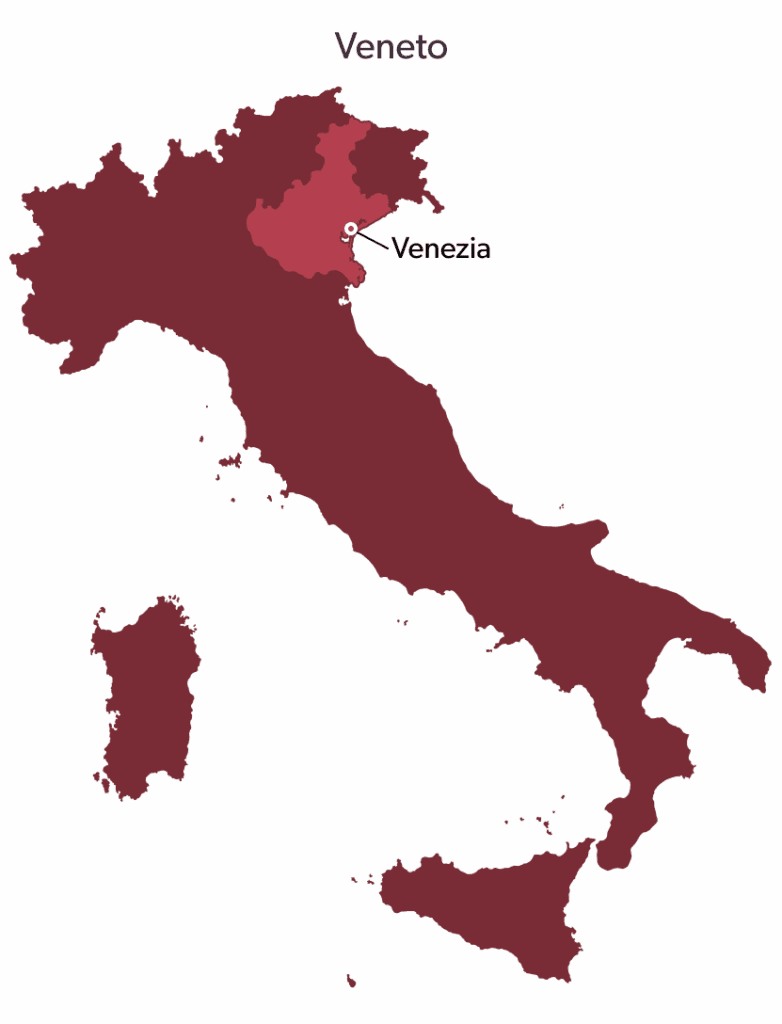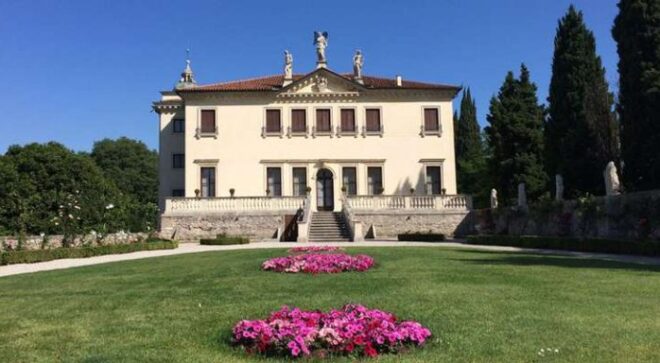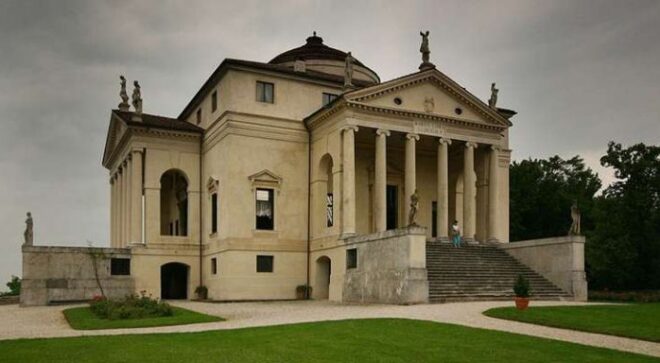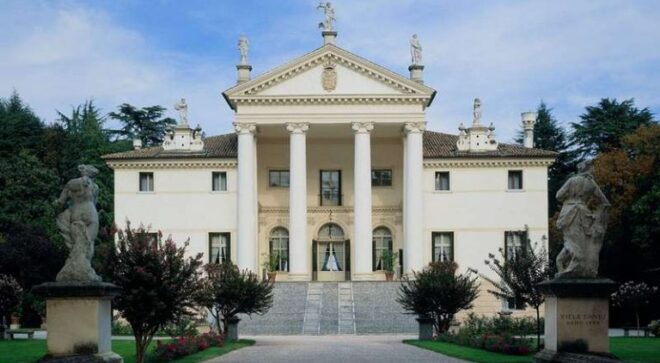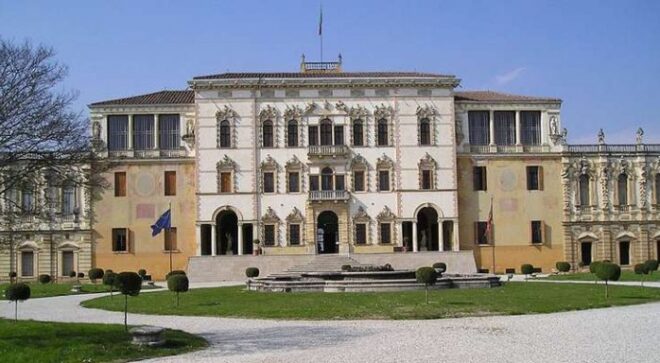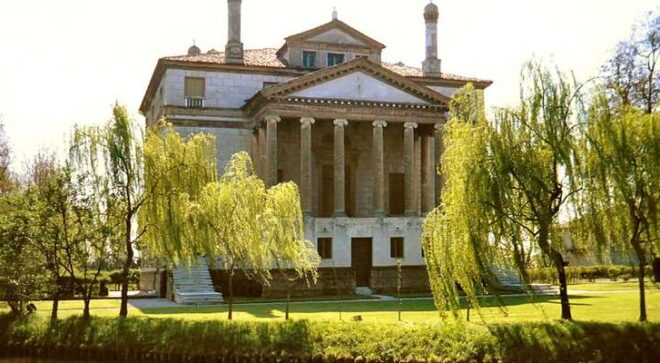We find in the Veneto Region some unique villas, which fascinate by their timeless beauty and by their rich history. Designed in the mid-1500s by the architect Andrea Palladio for the wealthiest families of the region, these are the famous Palladian Villas. These homes were not only summer residences, but also genuine productive centres, surrounded by vineyards and cultivated fields. Between 1994 and 1996, twenty-four of these villas were added on the UNESCO “World Heritage” list.
We have chosen 5 of them for you to discover, through an itinerary which begins in Venice, passes through Padua and Treviso, before finishing in Vicenza.
Villa Foscari
We start off from Venice and head towards Mira. Our first visit is Villa Foscari, built near the Brenta Canal: the intention of its owner, Niccolò Foscari, was to have the villa accessible by boat from the centre of Venice. Make sure to go see the frescoes in the Villa, representing mythological characters.
According to a legend, the Villa received its nickname, “Malcontenta”, in memory of a lady of the Foscari house, relegated between the walls of the Villa as punishment for her scandalous behaviour. It is said that the lady lived the last thirty years of her life without ever going out or being seen in the windows of the Villa.
Villa Contarini
We now leave behind beautiful Venice and move towards the West, quickly arriving in Padua, the third largest city in the Veneto region, famous for the Scrovegni Chapel, where paintings by the great painter Giotto are exhibited.
It is in the province of Padua that we find Villa Contarini, one of the largest Baroque-style Venetian villas, surrounded by a park of 40 hectares, with lakes, sanctuaries, a chalet and ponds.
Take the time to visit something really unusual: the Seashell Gallery (Galleria delle conchiglie), a room where the ceiling and the walls are completely decorated with real seashells.
The music room is on the third floor and is where musicians were placed during parties. The room has the unusual form on an inverted guitar, with a wooden ceiling and a hole in the center of the floor, allowing music to spread towards the Auditorium, located on the floor below.
Villa Sandi
We are now at the halfway point in our itinerary and a little rest is more than welcome. Before arriving in Vicenza, we visit Villa Sandi, a Palladian style villa, where you can relax and enjoy an excellent Prosecco.
Villa Sandi is located in the province of Treviso, at the foothills of Prosecco, and represents a successful example of the union between art and agriculture, which characterized Veneto in the 1500s.
A nice boulevard leads up to the entrance of the villa, dotted with statues of the famous sculptor Orazio Marinali, while a portico supported by four ionic columns adorns the main building.
The winery is open to the public throughout the year for guided tours, with reservations. You can visit the underground cellars, the garden and the interior of the villa, in rooms where renowned historical guests, such as Napoleon Bonaparte, Antonio Canova, the painter Schiavoni, and writers Caccianiga and Corso, stayed.
The discovery of the territory continues at Locanda Sandi, where you can enjoy typical Venetian dishes accompanied by Villa Sandi wines. You also have the opportunity to participate in a sommellier class and take part in wine tastings, for an experience that combines the love of art with the pleasures of the palate.
Villa Almerico Capra
We continue from Treviso towards Vicenza to admire Villa Almerico, built atop a hill just outside the city. It is the most famous Palladian Villa and, probably, the most famous of all the Venetian villas. Its owner, Paolo Almerico, dreamed of a sophisticated villa, a quiet refuge for meditation and study.
Palladio designed for him a true temple-villa. Although this residence is also known as ‘La Rotonda’, this is technically inaccurate, since the building is not circular.
Villa Valmarana ai Nani
Our next Venetian villa was not designed by Palladio, but we recommend it for the beauty of its interior frescoes, decorated by Giambattista Tiepolo and his son Giandomenico, representing scenes from the Iliad, Aeneid, Jerusalem delivered and Orlando Furioso.
Its nickname, “ai Nani”, comes from the stone sculptures lined up on the wall. According to legend, the owner’s daughter was diagnosed with dwarfism. In order for the girl not to feel different because of her size, all the servants were chosen specifically for their dwarfism.
When a handsome Prince visits the villa, the girl, full of despair, takes her own life by jumping out of the tower. Her dwarf servants were petrified by the pain and, even today, watch over the villa and its owners.

